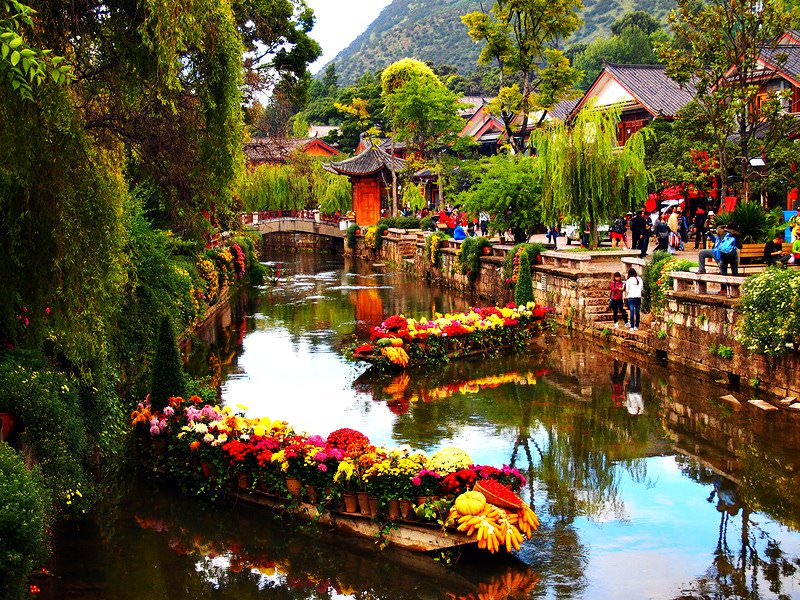Lijiang old town of China

Lijiang is perfectly suited to the irregular topography of this commercial and strategic site, it has preserved a historic urban landscape of high quality and authenticity.
It belongs to the list of places that are World Heritage Sites according to Unesco since 1997, and it is not for less, given the great beauty and uniqueness of the place.
Its architecture stands out for the mixture of elements from various cultures that have come together for many centuries.
It was first built in 1126 in the late Song dynasty and in 1253 Kublai (the first emperor of the Yuan dynasty) was stationed here on his march south. Lijiang is recognized as an ancient city built in a simple and artistic and scientifically designed style of the world.
Geographic location

Lijiang is surrounded by the Lion Mountain in the west and by the Golden Row Elephant Mountain in the north. These mountains in the northwest serve as shelter from the cold wind.
Lijiang is favored with abundant sunlight, the east wind, and clear spring water, which flows in three streams and reaches each family.
Many stone bridges and arches in the city were built during the Ming and Qing dynasties and orderly roads and lanes extend to four directions from the central square.
The houses are made of wood; most have a wall screen in front and some have a quadruple patio, in which the local people plant many flowers.
Traditional culture

The ancient traditional culture of the Naxi ethnic group is the Dongba culture, which is based on the Dongba religion. Believers practice witchcraft, are experts in medicine and culture is transmitted through literature and art.
There are more than 1,400 types of Dongba scriptures written on these characters and they occupy 20,000 volumes. The scriptures cover religion, philosophy, history, local customs, literature, art, astronomy, medicine, the calendar, geography, flora, fauna, dance, painting, and music.
What to see
Sifang Street
It is the center of Lijiang Ancient City, it covers an area of about six acres. The shape of the square is like an official seal so it was named Sifang Street (Street Square) by Tusi getting its meaning of «conquering the area».
Ancient bridges
Above the Yuhe River system in Lijiang Ancient City, there are 354 bridges in the city in order to maintain this convoluted water network. They are in refuge bridge, stone arch bridge, flagstone bridge, and board bridge styles.
The famous bridges are Suocui Bridge, Dashi Bridge, Wanqian Bridge, South Gate Bridge, Saddle Bridge and Renshou Bridge, all of which were built in the Ming and Qing dynasties.
Mu Palace

Lijiang Mu is the palace of the Mu Tusi family in Lijiang, where the Mu clan of the Naxi ruled for over 400 years. It is a large complex that extends to cover part of the hill behind it.
Since Naxi chief Mu Ziyuan inherited the Lijiang Tusi palace, he passed through Yuan, Ming and Qing three dynasty emperors from 22 to 470 years ago, so Mu Palace is the political and cultural center of the Lijiang region.
Kegongfang
The impressive Imperial Examination Archway, or Kegongfang, is a three-story building and is located on the west side of Sifang Street. This arch has the central and western rivers running along its sides. And it is said that Kegongfang was built in the Qing Daoguang period.
Travel tips
The best time to visit Lijiang Ancient City
The four seasons landscape is different in Lijiang city, visiting Lijiang in different time, you will have different feelings and experiences.
Lijiang is a plateau-type southwest monsoon climate, warm in winter and cool in summer, much of Lijiang whose annual temperature difference is small, but the temperature difference between day and night is quite large.


